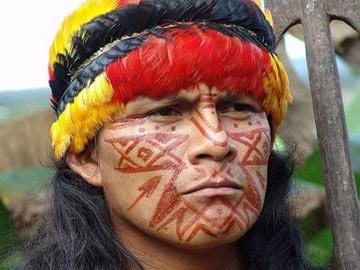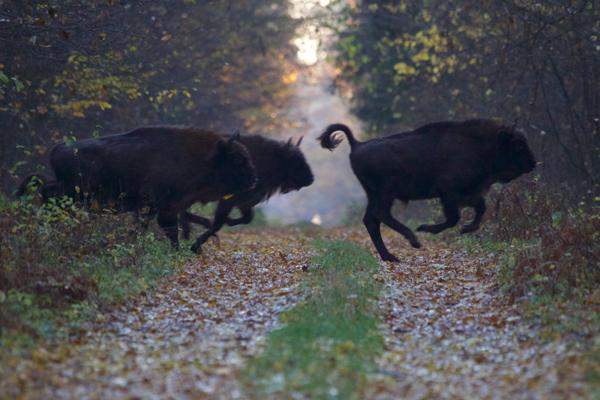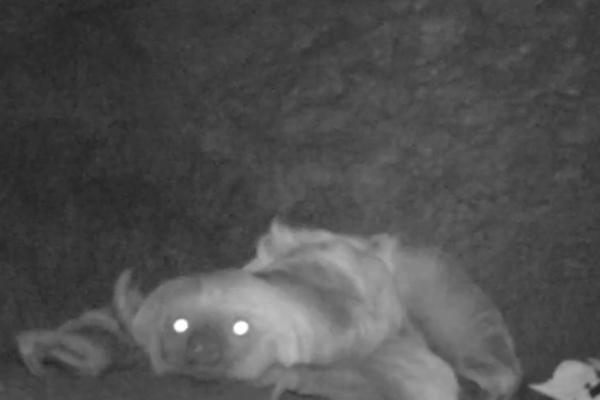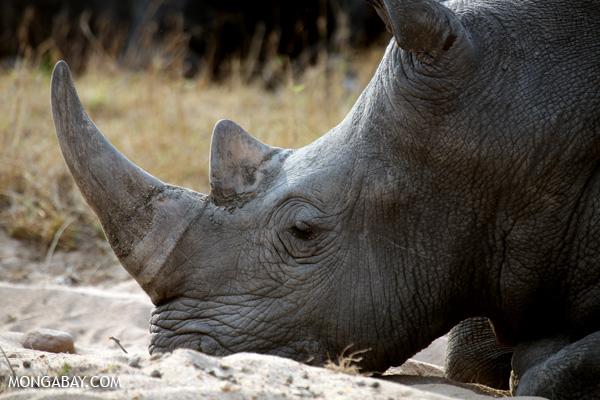Days before José Isidro Tendetza Antún was supposed to travel to the UN Climate Summit in Lima to publicly file a complaint against a massive mining operation, he went missing. Now, the Guardian reports that the body of the Shuar indigenous leader has been found, bound and buried in an unmarked grave on the banks of the Zamora River. A well-known leader of the local Shuar communities, Tendetza Antun was also a vocal critic of a Chinese-operated Mirador mine in Ecuador’s remote, and hugely biodiverse, Cordillera del Condor region.
Indigenous leaders believe Tendetza Antún was murdered for his activism against the Mirador project.
“His body was beaten, bones were broken,” another Shuar leader, Domingo Ankuash, told the Guardian. “He had been tortured and he was thrown in the river...This is a camouflaged crime. In Ecuador, multinational companies are invited by the government and get full state security from the police and the army. The army and police don’t provide protection for the people, they don’t defend the Shuar people. They’ve been bought by the company.”
Ankuash said that before the murder, unnamed assailants had already destroyed Tendetza Antún’s house and burned his farm to the ground. The Shuar are the second largest indigenous group in Ecuador, which in recent years has been viewed as backpedaling on environmental protections and indigenous rights.
Sitting in what is believed to be one of the most biodiverse places on the planet, the Mirador open pit mine would result in the destruction of nearly 10,000 hectares of forest for mostly copper, but also gold and silver. The planned mega-mine is considered one of the largest untapped copper deposits in the world and is expected to deliver 2.9 million tonnes of copper in total if exploited.
According to the Global Forest Watch, 96 percent of the Zamora-Chinchipe Province was covered in forest in 2000, totaling over a million hectares of forest. Between 2001 and 2012 the province lost 16,320 hectares from 2001 to 2012 when analyzing ten percent forest cover. This equals a total loss of 1.5 percent during the twelve years studied.
Forest loss across the whole state of Ecuador was similar. The country lost more than 450,000 hectares of forest between 2001 to 2012, representing a total loss of 1.7 percent during the twelve years at the ten percent forest cover level. The Latin American country is covered in over 25 million hectares of forest.
The Mirador mine project was originally operated by a Canadian company, Ecuaorriente (ECSA). But in 2010, the company was purchased by the China Railway Construction Corporation and the Tongling Nonferrous Metals Group Holding Company. Ecuador granted the project an environmental license in 2012 including a 60 operating lease.
The Environmental Impact Assessment found that if allowed to go ahead the six planned open mines could results in the extinction of three frogs--the Kingsbury’s rocket frog (Allobates kingsburyi), Pristimantis incomptus, and Pristimantis rhodostichus--and one reptile: the red-throated wood lizard (Enyalioides rubrigularis).
Local communities are also concerned about the threat of water pollution from mine waste.
Tendetza Antún disappeared on November 28th on his way to a meeting with government officials regarding the Mirador mining project. He was scheduled to leave for the UN Climate Summit in Lima on December 2nd where he would have filed against the mining project at the Rights of Nature Tribunal organized by NGOs. But he never showed up. His body was found in an unmarked grave on December 4th and identified by his son via photographs.
This morning in Lima, the Ecuadorian sub-secretary for the environment, Andres Hubenthal, said the government would conduct a thorough investigation into Tendetza Antún’s death.
Risks appear to be rising for indigenous leaders and environmental activists. A report earlier this year found that 908 environmental activists had been murdered between 2002 and 2013, though many unstable countries were left out of the accounting due to a lack of data. Earlier in the year, four indigenous leaders, including internationally known Edwin Chota Valera, were assassinated in Peru, allegedly for opposing illegal logging on their land.
This article was originally written and published by Jeremy Hance, a contributing writer for news.mongabay.com. For the original article and more information, please click HERE.




